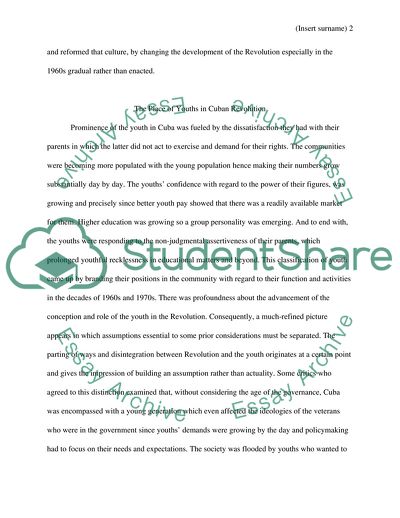Cite this document
(Youth in Cuban Anti-Revolution Case Study Example | Topics and Well Written Essays - 2000 words, n.d.)
Youth in Cuban Anti-Revolution Case Study Example | Topics and Well Written Essays - 2000 words. https://studentshare.org/social-science/1853838-youth-in-cuban-anti-revolution
Youth in Cuban Anti-Revolution Case Study Example | Topics and Well Written Essays - 2000 words. https://studentshare.org/social-science/1853838-youth-in-cuban-anti-revolution
(Youth in Cuban Anti-Revolution Case Study Example | Topics and Well Written Essays - 2000 Words)
Youth in Cuban Anti-Revolution Case Study Example | Topics and Well Written Essays - 2000 Words. https://studentshare.org/social-science/1853838-youth-in-cuban-anti-revolution.
Youth in Cuban Anti-Revolution Case Study Example | Topics and Well Written Essays - 2000 Words. https://studentshare.org/social-science/1853838-youth-in-cuban-anti-revolution.
“Youth in Cuban Anti-Revolution Case Study Example | Topics and Well Written Essays - 2000 Words”. https://studentshare.org/social-science/1853838-youth-in-cuban-anti-revolution.


